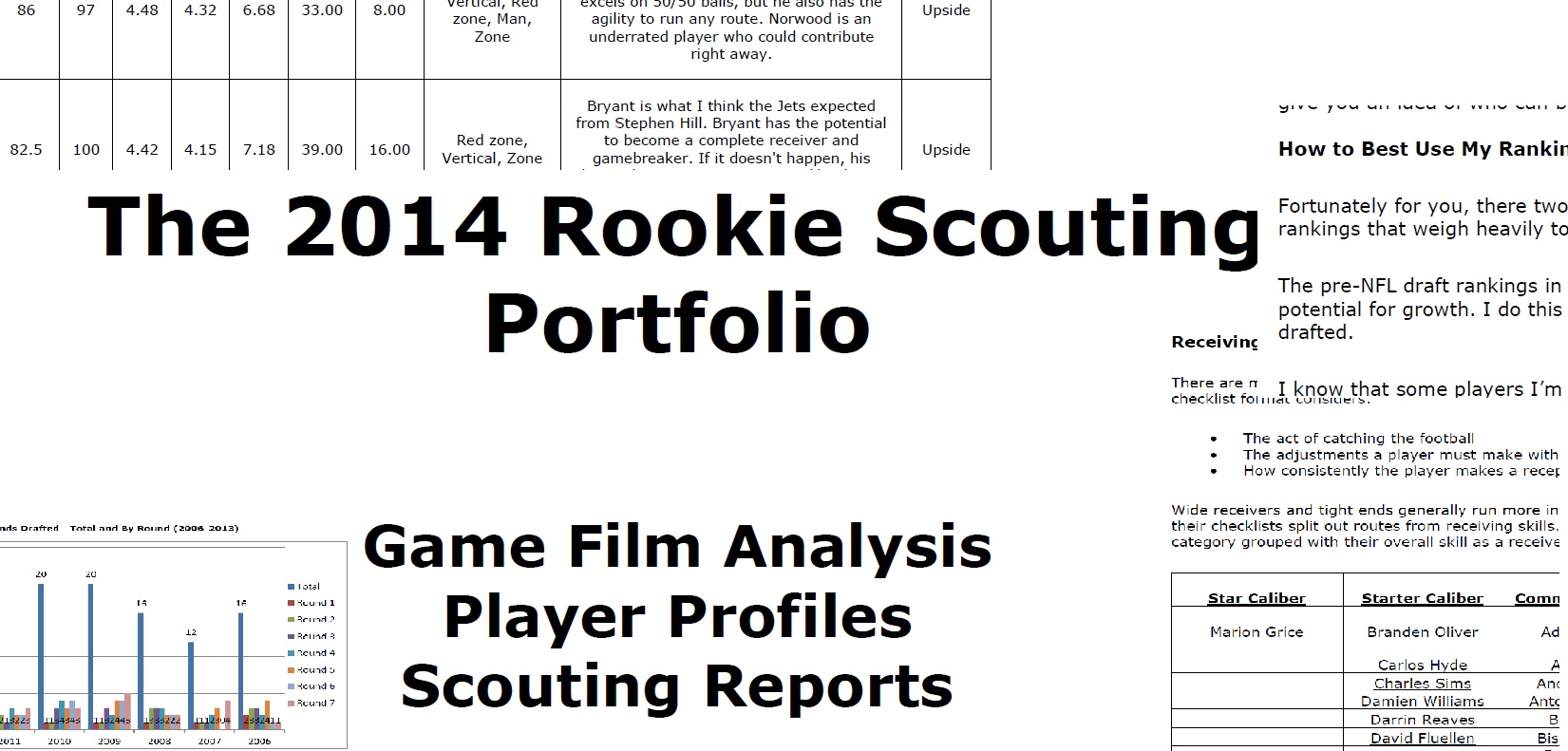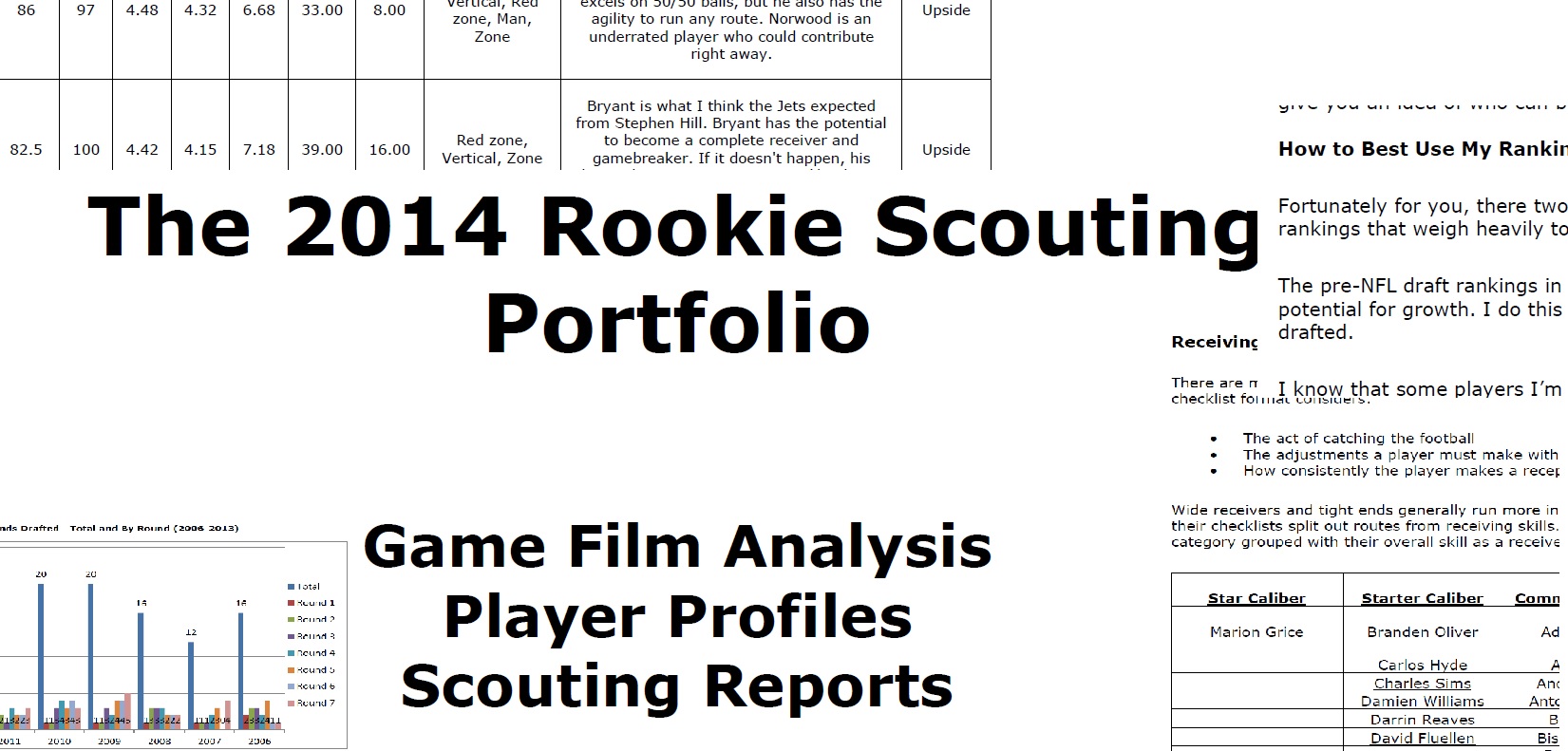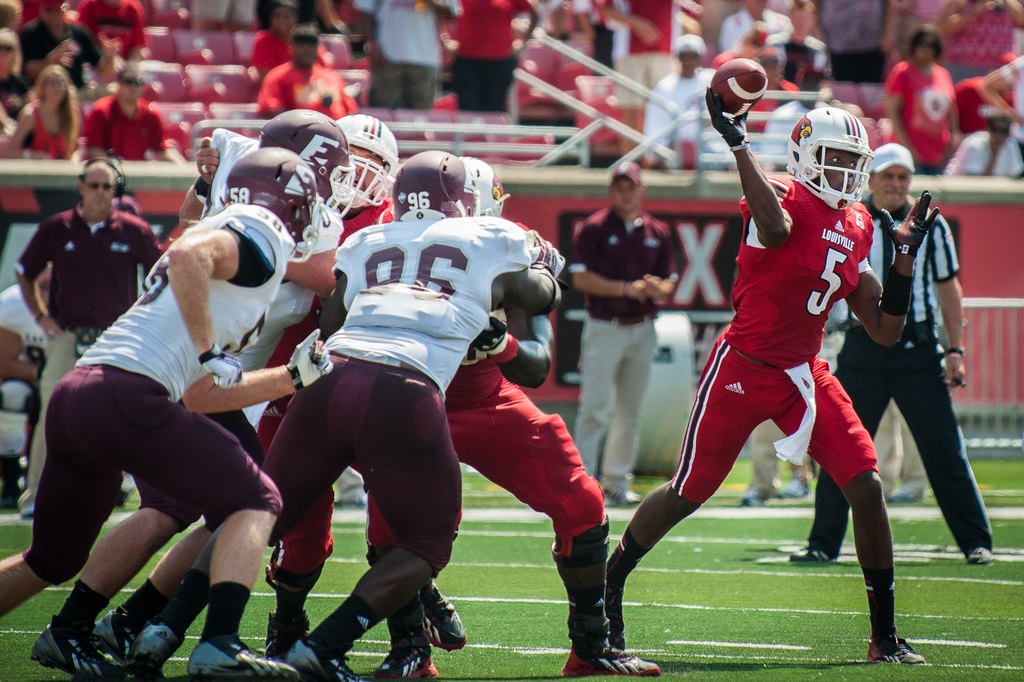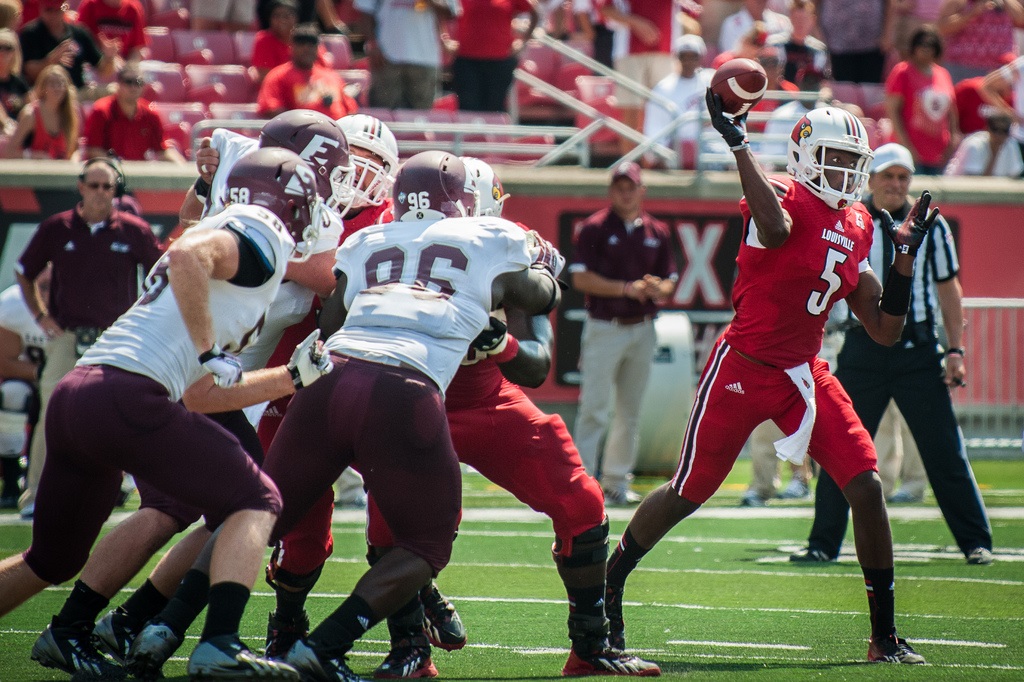
Utah’s Jake Murphy is a safe, late-round pick with upside when called upon to do more.
One of the challenges involved with player analysis is to be succinct with delivering the goods. As the author of an annual tome, I’m often a spectacular failure in this respect. A series I started last spring at the RSP blog to remedy it is The Boiler Room.
I often see a play unfold while I’m studying a prospect that does a great job of encapsulating that player’s skills. When I witness these moments, I try to imagine if I was working for an NFL organization creating cut-ups for a personnel director would I include this play as part of a cut-up of highlights?
In every draft, there are players who lack the attention-grabbing athleticism and production to capture the attention of the media and draftniks, but have something to offer the NFL. In a draft as deep as this one, these players are late-round picks at best.
Jake Murphy is one of these prospects who might be off the public’s collective radar, but has potential value to an organization for his hands, athleticism, and special teams play. However, the tight end from Utah is 25 years old and it is a point that some draftniks will nitpick.
I only see the logic of lowering the value of a player if he has an early round grade and the expectation is for him to become a long-term starter. Correct me if I’m wrong, but not a lot of players earn second contracts with their original teams. The first contract is generally a deal of 2-4 years, the average lifespan of an NFL career.
If I were a GM, why would I sweat the age of a 25 year-old tight end? If he was 28, different story, but 25 is young enough that if he develops beyond expectation, he still has another 2-3 years of good production before thinking about athletic decline–and I’m not including the top athletes at this position who play into their mid-30s.
Murphy isn’t seen as a top athlete at the position, but his physical skills aren’t bad by any stretch of the imagination. His short shuttle was the second-best time for his position at the combine and his three-cone drill was fourth among participating tight ends. The potential to get off the line and change direction with suddenness is there and that’s good enough for a player of Murphy’s skills to threaten a seam and win in the short zone.
And Murphy’s skills are difficult to teach because despite lacking high-end tools, he integrates the tools he has in a way that some high-end athletes can never succeed in doing. The two plays below are good examples.
The first is a 3rd and 13 pass from the 16 of Colorado early in the first quarter. Murphy is next to the right tackle in a 2×1 receiver, 11 personnel pistol. The outside linebacker near the line of scrimmage is shaded outside and the safety is 10 yards deep, also with outside shade. Murphy gets a clean release inside and executes a double move, forcing the safety to bite on the shallow stem of a stop-and-go that Murphy breaks to the inside for a touchdown catch.
[youtube=http://www.youtube.com/watch?v=TXO3y5lXFlI&start=44&w=560&h=315]
There are a few things I like about Murphy’s performance on this play. Although the double move isn’t the best route I’ve seen, his footwork is precise and fluid. It’s a good sign that he can do more as a route runner. He also sinks his hips and turns his outside shoulder to sell the potential break on the stop route. This baits the safety to break outside.
A tight end with good feet and hip flexibility has the promise to develop into a good NFL route runner. What he showed here is a good reflection of what he did at the combine. He’s quick enough to do the job and savvy enough to trick an opponent.
Murphy finishes the play with a good catch of the target placed above his head. The athleticism and awareness of the reception is another thing I liked about this play. While the beaten safety tries to work back to the break to cut off the route, the other safety is approaching Murphy from the opposite side of the field.
Murphy extends for the ball, makes the catch, and spins inside to avoid the oncoming safety at the five. This is a good display of concentration and hand-eye coordination to make the play, gauge the oncoming defender and move to protect the ball.
The oncoming safety wraps Murphy, but the tight end drags the tackler across the goal line, earning the final three yards to the end zone standing up. Murphy avoids the potential for a collision, but also prepared for it with enough focus to still make the reception. This is the kind focus an NFL tight end has to display as a matter of routine.
Here is a reception in tight, physical coverage on 3rd and 9 (note that this is the second, third-down target I’m showing you–a good sign about Murphy’s reliability in the passing game) from a 1×3 receiver, 1o-personnel pistol. Murphy is the inside trips receiver on the left side of the formation. The safety is eight yards deep with a slight inside shade.
Murphy runs an eight-step stem and patters his feet into a turn on an in-cut. Not a great route by any means, but if there’s an aspect of tight end play that should improve with experience it’s running pass patterns.
Still, Murphy freezes the safety just enough with a small dip to the inside once he reaches the top of his stem. It’s hard to catch, but it’s there. What’s difficult for a receiver to improve in his game is winning the ball in tight, physical coverage–and that is what comes next.
Murphy drifts to the first down marker after he breaks inside and makes the catch between both safeties. The tight end shields the trailing safety with his back and extends for the ball as the front side safety delivers a shot to Murphy’s chest.
[youtube=http://www.youtube.com/watch?v=TXO3y5lXFlI&start=127&w=560&h=315]
The impact of the collision is strong enough to shake the trailing safety off Murphy’s back, but the tight end also has enough balance to bounce off this head-on collision, spin to the middle of the field, and gain another five yards the trailing safety drags Murphy to the turf by the legs.
It’s tough to teach a player how to adjust to the ball and withstand punishment. These two plays show Murphy getting it done. In addition to his special teams work, there are enough compelling reasons why I’d consider Murphy as a late-round pick.
I know he has a feel for the passing game, the focus and toughness to make plays if called off the bench, and potential to grow into a contributor in an offense. Even if he never earns that chance, the fact he has experience on kicks and demonstrates the skill to run and tackle means his downside is good enough to consider him. However, it’s the upside that would make me want to pick him.
For analysis of skill players in this year’s draft class, download the 2014 Rookie Scouting Portfolio – available now. Better yet, if you’re a fantasy owner the 56-page Post-Draft Add-on comes with the 2012 – 2014 RSPs at no additional charge and available for download within a week after the NFL Draft. Best, yet, 10 percent of every sale is donated to Darkness to Light to combat sexual abuse. You can purchase past editions of the Rookie Scouting Portfolio for just $9.95 apiece.






